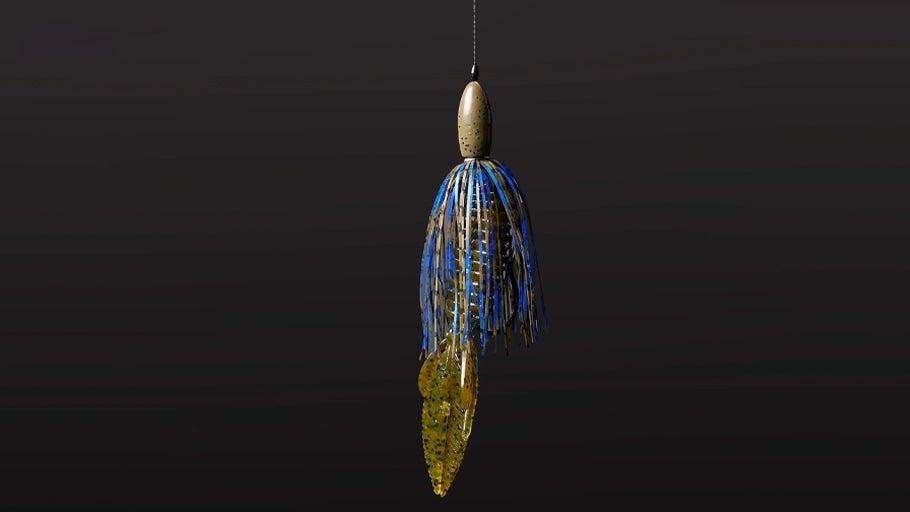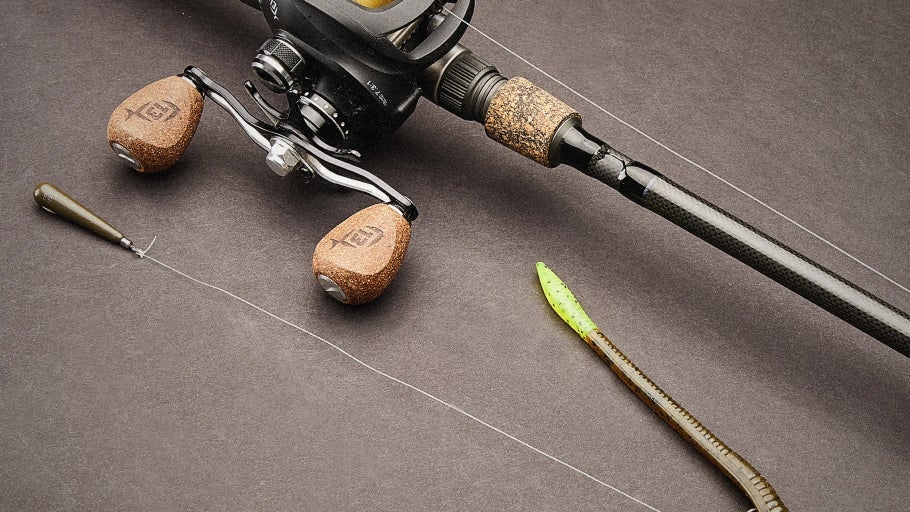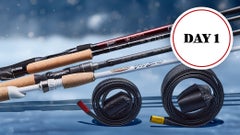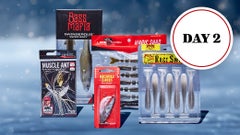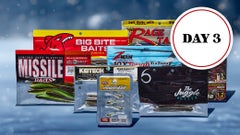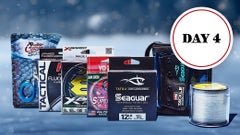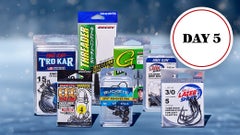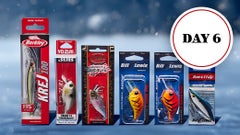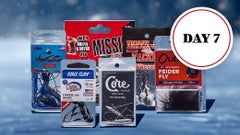
Texas Rigs Gear Guide
A time-tested tactic that has been putting plaques on garage walls for decades, the Texas rig is a fundamental technique widely used by touring professionals and an essential approach for anyone learning the basics of bass fishing. The magic of the Texas rig lies in its simplicity, as it is only comprised of a hook, a bullet-shaped worm weight (either pegged or unpegged), and a soft-plastic bait.
This method allows anglers to crawl the bottom with virtually any soft plastic in existence, including worms, creatures, lizards, craws, and more. Thanks to its exceptional snag-resistant capabilities, the Texas rig also provides the utility to be flipped and pitched into shallow cover. The goal of this guide is to expand your knowledge of this vintage technique, provide an in-depth gear recommendation, and explore when and why it’s a good idea to use a pegged weight.
Texas Rig Rods
Texas rigs come in all shapes and sizes, so while the bait, weight, and hook size dictate rod choice, most setups are satisfied by an “all-purpose” jig and worm rod. Look for a casting rod in the 7’ – 7’6” range with a medium-heavy to heavy power and a fast to moderate-fast taper to cover most scenarios. When you’re bordering on the line of finesse, you’ll want a rod that is soft enough to make accurate casts with a lighter weight while still maintaining enough backbone to drive the hook home. If you’re fishing around thick cover, a lighter-powered flipping stick should check all of the boxes for a Texas-rig rod.
Texas Rig Reels
Generally speaking, almost any casting reel with a 6:1 to 7:1 gear ratio or faster will set you up for success here. Texas rigging doesn’t often call for specialized equipment. However, speed becomes increasingly important when you are trying to pick up line quickly to catch up to a fish during battle or when one is swimming off with your bait. As far as size is concerned, a 70- or 150-size reel makes a great choice and easily fits in the palm of your hand, allowing you to keep your fingers in direct contact with the rod blank and/or your line to help detect subtle bites.
Texas Rig Line
Always let the type of cover you’re fishing around and the size of your presentation dictate the size and type of line you select for your Texas rig. For most applications, fluorocarbon lines ranging from 12- to 20-lb test offer the near invisibility, abrasion resistance, and minimal stretch that Texas rigs require. In the event that you are fishing during the spawn or simply targeting bass sheltering in shallow cover, the added power of a braided mainline may be necessary for successful extraction. During the spawn, big fish will often nest in some of the nastiest cover imaginable. Utilizing braid provides you with a little extra insurance when fishing for your next personal best.
Modifications & Rigging
Adding a peg stop to your Texas rig will prevent the weight from sliding up your line and drastically change its performance. When fishing around heavy cover, pitching into stick ups, or trying to bust through matted cover, a pegged weight helps keep your presentation more compact. Having your weight and lure pinned together allows the entire presentation to penetrate the cover as one unit, as opposed to an un-pegged Texas rig where the weight may slip through and leave your lure behind. A pegged weight also makes your Texas rig more reactive, as the entire rig moves together when you impart action with the rod tip. When not using a peg, the Texas rig and weight create separation as the lure sinks towards the lake bottom with a slow descent.
As a general rule of thumb, most anglers will add a peg to keep the weight connected to the bait in heavy-cover situations and fish an un-pegged Texas rig for a more finesse approach and a subtle rate of fall in open water. Always keep a bright-colored marker or dipping dye in the boat to provide a splash of color to your soft plastic and increase attraction. When you are plagued by short bites, try trimming your bait down or removing some appendages to boost your hookup ratio, especially if you’re using a large creature bait.
Colors
There is no wrong answer when it comes to colors for Texas rigs; however, it’s important to keep some seasonal factors in mind by considering what type of forage the fish could be feeding on at a particular time of year. While natural colors like green pumpkin and watermelon produce year-round, craw and bluegill patterns become increasingly effective during the spring as the fish move up to spawn. Bright colors like white, chartreuse, and merthiolate are a great choice once you’ve located bedding fish or are fishing heavily stained and dirty water. Not only do bright colors make it easier for you to see your bait in the water, they also add an extra element of aggravation that can provoke fish into striking. Most of the year, however, natural, forage-imitating colors are a great place to start.
Whether you are a touring professional or just learning the basics, the Texas rig delivers a degree of dependability and versatility that is almost unparalleled, making it one of the core techniques of bass fishing.
Related Articles

